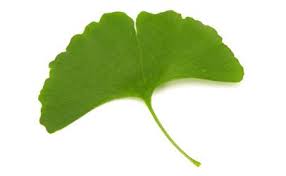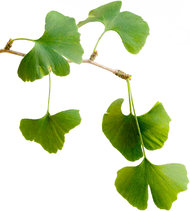By Woodson Merrell, M.D.
Update: Study Shows 90 Minute Jog Can Enhance the Power of a Flu Shot
October is the optimal time to get a flu shot because it confers immunity (which can take a week or two after the shot) well before the flu sets in. However, in this year when flu is at epidemic levels, January is not too late as the flu season often does not start in earnest until late December or early January, and typically runs until March. The only caveat is that if you have been in close contact with someone who has the flu, or if you are feeling sick in any way--cold, sinus congestion, stomach bug, fever--you should not get a shot at that time as it could put an added stress on your immune system and could make you sicker.
 A model of the H3N2 virus, which contains strains of viruses that originate in birds, pigs and people.
A model of the H3N2 virus, which contains strains of viruses that originate in birds, pigs and people.
A word on the effectiveness of the flu shot. Last week the CDC announced that the estimated vaccine effectiveness is 62% for the 2012-2013 vaccine based on a survey of 1,155 adults and children enrolled in a monitoring program from December 2 to January 2. That means those who got vaccinated were about 60 percent less likely to get the flu, according to CDC director, Tom Frieden. Historically, flu shot effectiveness ranges from 50%-70% (last years' shot was closer to 50%) so this year's shot offers a reasonable level of protection. But this is a big advantage compared to 0% without a vaccine.
Some groups fare better with the vaccine than others. Previous years' data show that younger people tend to be better protected by the vaccine than older people, and that people with underlying illness may be less likely to be protected. It's far from a perfect shot, but a 60% reduction in the risk is as powerful a preventive tool as most anything we have.
 To maintain immunity you need a flu vaccine every year; children tend to be better protected by the vaccine than older people.To maintain immunity you need a flu shot every year partly because the flu viruses that circulate the globe mutate over time, and also because the immunity conferred by the vaccine is only short-term, especially compared to many childhood vaccines that last for decades (and get well over 90% efficacy.) Every year in February the World Health Organization (WHO) brings together medical scientists and physicians responsible for global influenza surveillance, and they produce a report based on data from the previous months' flu outbreaks in the Northern Hemisphere (and early reports from the Southern Hemisphere, specifically Australia.) The previous years' strains are hyper-mutated in the lab with the goal of approximating the strains that will appear 6 months later. Because natural mutations work differently than in the lab, the vaccine is never 100% on target.
To maintain immunity you need a flu vaccine every year; children tend to be better protected by the vaccine than older people.To maintain immunity you need a flu shot every year partly because the flu viruses that circulate the globe mutate over time, and also because the immunity conferred by the vaccine is only short-term, especially compared to many childhood vaccines that last for decades (and get well over 90% efficacy.) Every year in February the World Health Organization (WHO) brings together medical scientists and physicians responsible for global influenza surveillance, and they produce a report based on data from the previous months' flu outbreaks in the Northern Hemisphere (and early reports from the Southern Hemisphere, specifically Australia.) The previous years' strains are hyper-mutated in the lab with the goal of approximating the strains that will appear 6 months later. Because natural mutations work differently than in the lab, the vaccine is never 100% on target.
Another limitation in vaccine design is that current vaccines can hold only three different influenza viruses, though development of a vaccine to hold four viruses, known as a quadrivalent vaccine, is underway and expected as early as next year.
The 2012-2013 vaccine contains two influenza A virus strains (H1N1 and H3N2)) and one influenza B virus strain, but there is an additional B strain not in the vaccine that represents about 10% of current flu cases according to the CDC.
In addition, there are a number of other non-influenza viruses circulating, including respiratory viruses and a norovirus (causing vomiting and diarrhea) that make people feel almost as sick as having the flu.
Many people have a fear that the flu shot will somehow give them the flu or cause harm in some other way, and these are good questions to discuss with your family physician.
The fear that the flu vaccine will weaken your immune system, promulgated by the alternative healthcare community, is for the most part incorrect--and in a season such as this, somewhat dangerous.
The vaccine contains an inactivated form of the virus that can't give a person the flu; the most common side-effects are irritation where the flu shot was given, nasal congestion after the flu vaccine nasal spray, and occasionally brief (1-2 day), light, flu-like symptoms.
 Most flu vaccines are made with egg protein; people with egg allergies should speak with their doctor, and possibly get a skin test.However, there are a couple of caveats regarding real potential side-effects. For people who are allergic to eggs, there is potential for an allergic reaction to the egg protein used to make the flu shot. This past year a new egg-free, cell-based vaccine was approved in the U.S., but is not yet widely available. If you suspect you have an egg allergy, a skin test may be needed to determine the severity. If the skin test is only moderately positive, it's possible to get a flu shot. You may have to hang around your doctor's office for 30 minutes after getting the shot in case you have a reaction. It's also possible to give 10 percent of the vaccine in one injection to rule out a strong reaction, then the remaining 90 percent of the vaccine in a second injection.
Most flu vaccines are made with egg protein; people with egg allergies should speak with their doctor, and possibly get a skin test.However, there are a couple of caveats regarding real potential side-effects. For people who are allergic to eggs, there is potential for an allergic reaction to the egg protein used to make the flu shot. This past year a new egg-free, cell-based vaccine was approved in the U.S., but is not yet widely available. If you suspect you have an egg allergy, a skin test may be needed to determine the severity. If the skin test is only moderately positive, it's possible to get a flu shot. You may have to hang around your doctor's office for 30 minutes after getting the shot in case you have a reaction. It's also possible to give 10 percent of the vaccine in one injection to rule out a strong reaction, then the remaining 90 percent of the vaccine in a second injection.
Even scarier is the very remote possibility of developing a non-allergic immune reaction. In 1976, there was a small risk of developing Guillain-Barre Syndrome (GBS) after receiving a Swine Flu vaccine. Since then, numerous studies have been done to evaluate if other flu vaccines were associated with GBS. According to the CDC, in most studies, no association was found, but two studies suggested that approximately 1 additional person out of 1 million vaccinated people may be at risk for GBS associated with the seasonal influenza vaccine. This is lower than the rate of GBS in the general population, and serious complications from the flu occur with more frequency than that. Tens of thousands of people die from the flu each year.
In this year especially, when flu strains are rough, the risk-benefit equation falls on the side of getting the flu shot.
 Ask your doctor for a single-dose vial to avoid mercury in your flu shot.As for the last bugaboo, mercury (known as thimerosol and used as a vaccine preservative), most vaccines are now free of the toxic heavy metal that can damage the nervous system, and is potentially most harmful to children and pregnant women. While it has been removed from pediatric and single-dose vaccines, thimerosol is still found in multi-dose-vials used to give more than one shot. Ask your flu-shot provider for a single-dose flu shot, which does not require preservative. However, between worrying about the tiny bit of mercury in a vaccine and getting this year's wicked influenza--I would chose the flu shot. If you can only find the multi-dose shot containing thimerosol, just don't eat fish for a few weeks after getting the shot to make up for any mercury.
Ask your doctor for a single-dose vial to avoid mercury in your flu shot.As for the last bugaboo, mercury (known as thimerosol and used as a vaccine preservative), most vaccines are now free of the toxic heavy metal that can damage the nervous system, and is potentially most harmful to children and pregnant women. While it has been removed from pediatric and single-dose vaccines, thimerosol is still found in multi-dose-vials used to give more than one shot. Ask your flu-shot provider for a single-dose flu shot, which does not require preservative. However, between worrying about the tiny bit of mercury in a vaccine and getting this year's wicked influenza--I would chose the flu shot. If you can only find the multi-dose shot containing thimerosol, just don't eat fish for a few weeks after getting the shot to make up for any mercury.
The flu shot reduces--but does not eliminate--the chance that you will get sick from a virus this winter. In most years, for most healthy adults, my integrative approach to flu prevention is usually enough. However, in years like this when the flu is severe--or every year for most infants, the elderly, or those with pre-existing conditions and their family members--the flu shot as part of an overall strategy for flu prevention gives a better than fighting chance of staying healthy until spring.
See Dr. Merrell's Guide to Flu Prevention
 Tuesday, April 30, 2013 at 3:40PM
Tuesday, April 30, 2013 at 3:40PM 






